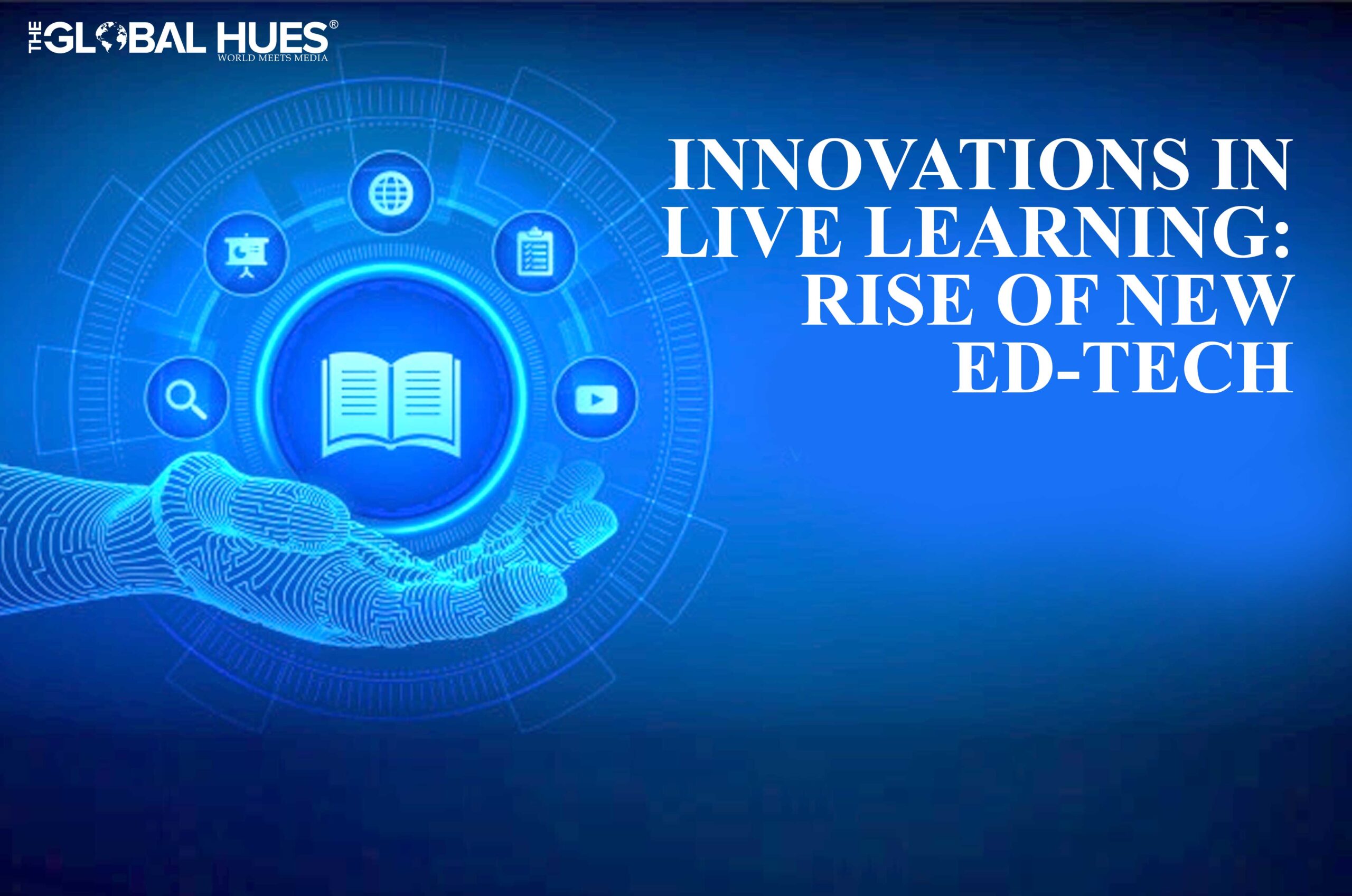The outlook of education is transformed with massive developments in technology. Now the demand for quality education is higher than ever before.
Education Technology, as the name suggests, is a huge influx of innovations to streamline the education system. The education system is adopting learners’ needs. The model of imparting knowledge is progressively blending with digital media and virtual sources such as videos, podcasts, interactive live sessions, etc, and 89% of Gen Z students are prioritizing live learning methods. Teachers are also showing more support to interactive sessions involving assistance by technologies. Internet bloom is one major reason behind this accelerated growth.
Any idea can now be researched on the internet using the best search engines all because of blooming technology in education. Many companies are coming up with hardware devices like laptops, tablets, and mobile phones, with specialized features to fulfill educational needs. Competition is rising in the markets, fastening the pace of newer developments.
Flexibility like Never Before
One key attractor in virtual classrooms is attractive options of video conferencing and virtual display. Robotic telepresence is making it possible for students to actually attend classes in a real classroom-like virtual environment. A powerful tool enhancing the experience of live learning by increasing the social interaction level. This tool allows students to rotate the direction of the robot and visualize classroom attributes like other classmates, teachers, blackboard, etc, making students a part of the classroom.
Robots are also beneficial in teaching hands-on skills to students, for example, medical students can get the on-site experience of clinical work. Social interaction is an integral element of the process of learning. Building good rapport and staying connected with other fellow mates help in effective live learning. Chat facilities available during live sessions help in the process. Some prestigious universities are resorting to unique ways of providing live learning to students. The Harvard Business School has created a whole production house in Boston public television station to provide live education, where professors work with the production crew to take a class.
The studio is further equipped with a wall that displays students to facilitate face-to-face interaction. The classroom experience is made real as much as possible to encourage maximum learning and participation from students. Virtual classrooms can be easily customized as per the institute and student’s requirements to give maximum output.
Spending hours in front of a screen listening to pre-recorded lessons with zero interaction with the educator might not inculcate the best skills and lead to a loss of interest in students. On the other hand, live lectures prevent distractions and make the child focus on what’s relevant. Another perk is on spot doubt clearing sessions and easy access to faculty. Teachers are also riding on a rollercoaster where they have to quickly learn the online systems, tools, and methodologies.
Handling a class online isn’t always a cakewalk. Live classes are now an expected standard for students chosen over other alternatives. Giants in the ed-tech sector like BYJUs, Toppr, etc, are also moving to live lectures understanding the dire need. Even after the crisis is over, real-time classes are expected to retain a major audience on ed-tech platforms.
Walking Parallel with Innovation
In the coming 5 to 10 years, few technological trends will take up a huge chunk in the segment of online education. Augmented Reality (AR) and Virtual Reality (VR), one of the most popular and fast-advancing gems of the tech world, provides an immersive live learning experience. Many Ed-tech platforms are already developing innovative solutions to elevate the experience in learning. Research has proven these techniques to be more immersive in boosting learning retention.
As per Edgar Dale’s Cone of Experience, humans can only retain 10% of what they read, 20% of what they hear, 30% of what they see, and 90% of what they do. Walking on this line, Ed-tech is evolving towards tools that facilitate better experiential learning experiences. An Australian startup named Jig has created an AR application allowing users to create 3D virtual objects, which can act as a great visual aid in the study of molecular structures like DNA and human anatomy.
Countries like China are currently investing billions in Artificial Intelligence Based Tutoring as they predict the adoption rate of AI in education will increase in the next 5 years to a global expenditure of USD 6 Billions by 2025. With that said, digital interactive whiteboards are making space in the market to facilitate the application of senses, memory, and cognition. Microsoft also launched Microsoft Surface Hub 2S (MSH2S) which comes with a mobile stand, allowing educators to teach from anywhere.
Blockchain is also going to expand further in Education offering opportunities like easy interaction from different parts of the world, safeguarding records, and subsidized costs. Virtual classrooms are becoming popular among the pandemic with inbuilt tools to communicate via audio, interactive whiteboard, instant polling, video, and other features. Some common ones include Zoom, Google, Microsoft Teams, and WebEx.
The New Norm
According to a study conducted by the National Health Systems Resource Center of India, virtual classrooms helped to increase live learning effectiveness in nursing students. Virtual classrooms also support other educational applications such as Moodle, Canvas, Desire2Learn, Sakai, and Blackboard. Many of them allow inbuilt powerful tools like multi-sharing, polling, and group chats. Students can also record live classes to watch later.
The Internet of Things (IoT) has also gained a lot of momentum in the ed-tech business. The IoT solutions are flooding gates for better monitoring, running scientific experiments, and much more. IoT in the education market will grow expectedly up to USD 11.3 Bn by 2023. It is unequivocally of paramount importance to indulge technology in the modern education system. Even though the existing Ed-tech market is reaping the benefits of advancing innovations, the future holds more potential.
Also Read:
- How To Create A Loyal Fanbase For Your Live Stream
- 10 Most Promising E-Learning Companies In India
- The Ed-Tech Evolution: New Way To Live
- Tips To Overcome Health Strains Of E-Learning
- Digital Learning: A New Era Of Education
- How Can You Make Online Learning More Effective?
- How To Boost The Effectiveness And Sustainability Of Online Communication




